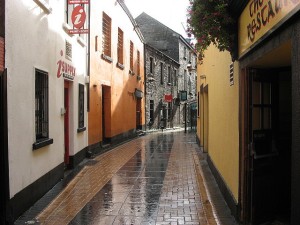This is just a short post on a seemingly trivial topic, but it seems to me that desktop backgrounds (or even screensavers for that matter), beyond just being personalization features, are sensemaking tools for organizing chaotic thought. An occasional rotation of these desktop backgrounds can be indicative of a mental sequencing of tasks or data contained therein. A logic puzzle of sorts. A decoder ring for making sense of the countless documents stored on one’s computer.
There has been countless studies on the positive effects of personalization on a learner’s ownership and engagement with a personal learning environment (PLE). Mine is a rudimentary one with Stickies (I am a Mac guy and have never successfully made the transition to Evernote), folders (everything on the desktop screen aside from music and media), music (further evidence of organizing logic), and various cloud tools and technologies (Google Docs, Posterous, Twitter, etc.). My tools and my work station. But I find myself changing my desktop background at consistent intervals to fit the work I am tasked with. Soothing backgrounds for chaotic times, far off places for inspiration, cities for a sense of orienting towards place of work (I am in Seoul working for a NY based organization but working on side projects in Edinburgh, London, and one entirely online), art, etc.
So, when faced with seemingly overwhelmingly complexity, the logical assumption would be that the learner would reduce distraction by removing superfluous form. For example, a clean blue background. The absence of something. However much it seems counterintuitive, that is not how we deal with complexity and chaos as learners. We add more complexity, a layer of something, to interpret that complexity. 3-D glasses, language dictionaries, augmented reality, even subway signs (when done right). It is an organizing layer when taken out of context would constitute noise, superfluous data. However, we as learners are searching for something to organize the facets into a pattern, into a structure that we can work with and eventually make sense of. So, we personalize everything not entirely because of ownership and engagement (but that is certainly a huge part of it); we personalize our learning environments (ie, everything) because we want to filter the chaos through a mental model. A familiar image. A song.
The key to making sense of chaotic complexity is adding more complexity, just a familiar instance of it. So, these are my desktop backgrounds for the last year or so. Many places, a lot of history, cities, activity, even structural simplicity. Even a song. Taken out of context, random lack of pattern and process. In context, a logical construct of sensemaking.
* I can’t for the life of me remember where all these photographs came from but rest assured at least one of them is from this fantastic photoblog. The music is Mozart, K. 581, Quintet for Clarinet and Strings.








